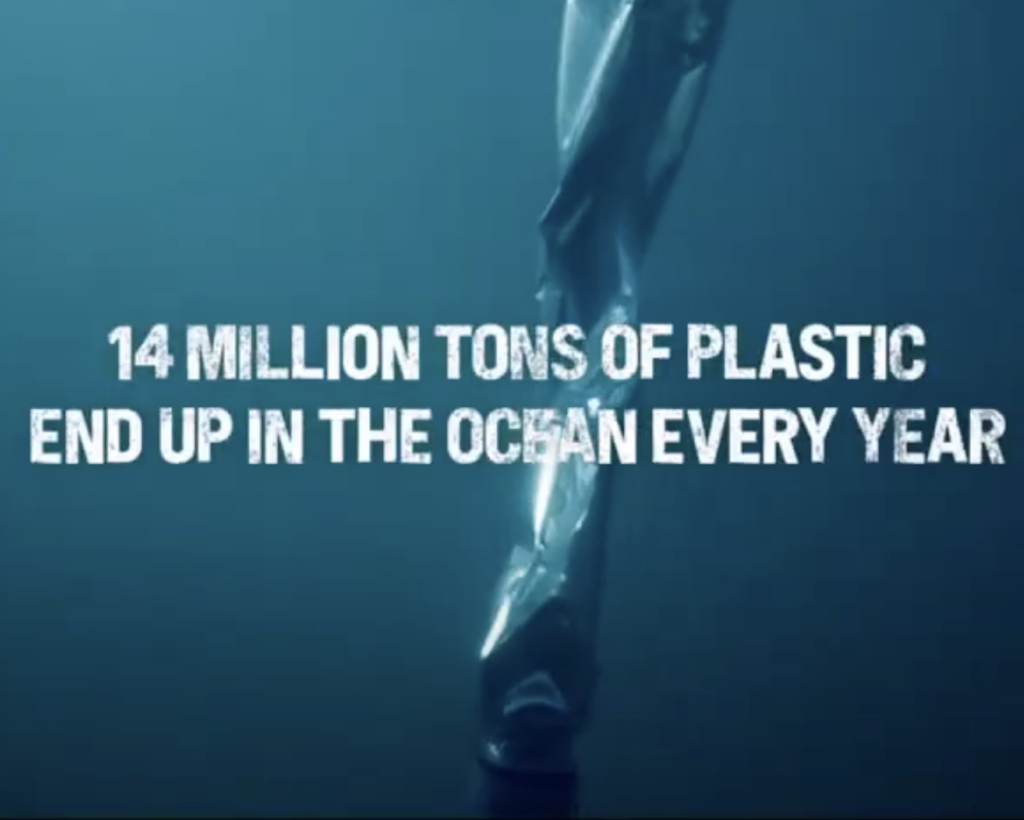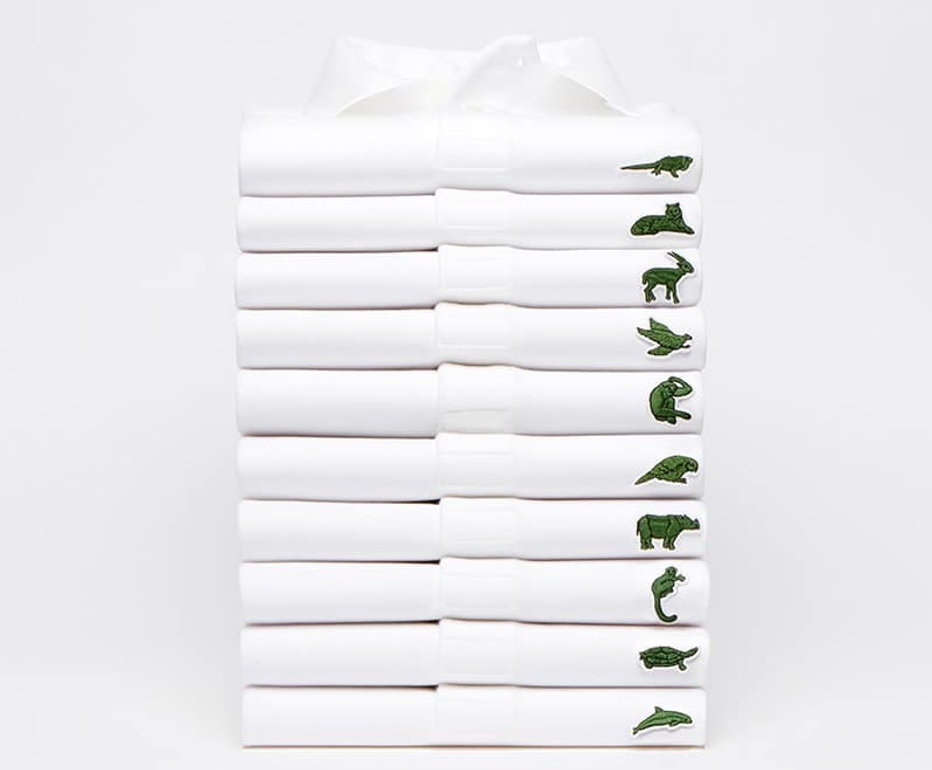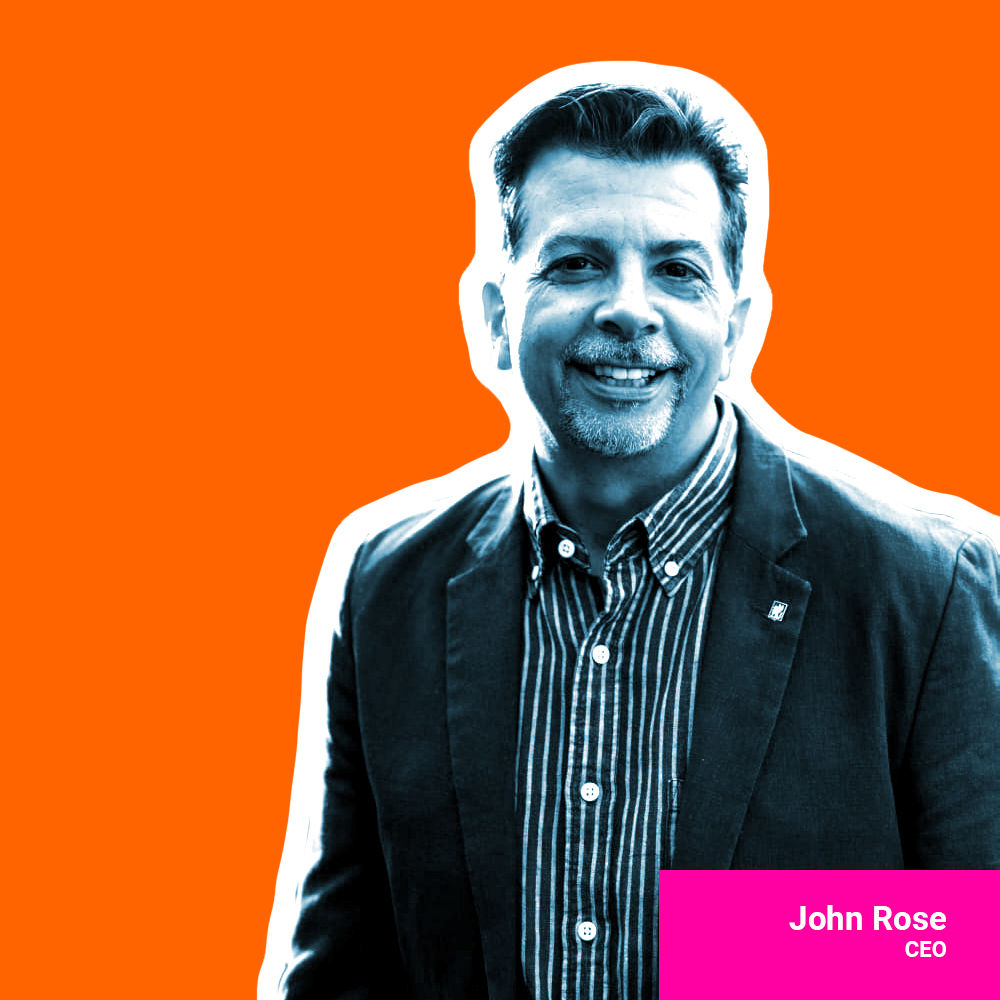
Building Consumer Trust Through ESG Marketing (With 12 Examples)
I remember when “ecology” became cool. It was April 22, 1970, when, in response to growing environmental concerns, the first Earth Day was organized across the USA, drawing an estimated 20 million participants. That was the day that I proudly added a pin with the ecology flag alongside buttons with peace and love symbols to my very groovy school bag. The Earth Day event significantly raised public awareness and sparked an increase in environmental activism. “Save the planet. You can’t get off” was a prominent slogan of the day.
It took over fifty years, but sustainability has finally emerged as a crucial element – influencing purchasing decisions across the globe. Of course, it’s often at the intersection of conscience and commerce where real change takes place.
An upsurge in environmental consciousness and direct-to-consumer e-commerce has propelled sustainably made products to a 17% share of the overall market value, up 3.3% since 2015. These eco-friendly goods are growing at a speed that is 2.7x faster than their conventional counterparts, capturing a significant 32% share of market growth.
Online interest in sustainable products is skyrocketing. Between 2017 and 2022, Google searches worldwide for topics related to sustainable products increased by around 130%, reflecting a heightened global appetite for environmentally friendly goods. This interest has translated into sales, especially for carbon-labeled products, which raked in over $3.4 billion in 2021, a remarkable doubling from the previous year.
The e-commerce sector has proven to be the most promising marketplace for these goods, with 75% of product categories experiencing better market share performance online than in-store. This rise may be attributed to the more progressive demographic of online shoppers and the ample opportunity to highlight a product’s eco-credentials online.
The consumer journey towards sustainability isn’t uniform.
A global survey of 10,281 consumers reveals that 78% find environmental sustainability important, but only 63% have actually made moderate to significant lifestyle modifications, including adopting greener buying habits. Millennials are leading the charge with 67% reporting lifestyle changes toward sustainability, compared to 59% of Baby Boomers.
The emergence of sustainability isn’t confined to any single region or demographic; it’s an increasingly global trend. Consumers in Brazil, China, Austria, and Italy have reported significant lifestyle changes towards sustainability. In Middle Eastern nations, such as Saudi Arabia, the UAE, and Egypt. PwC’s “Global Consumer Insights Survey 2021,” published in December, highlights a burgeoning awareness and commitment towards environmental and social sustainability among consumers, with an impressive 65% of those surveyed reported becoming more eco-friendly over the preceding six months. In contrast, Japan and the US lag behind, with the latter showing a high percentage of consumers who’ve made no changes at all.
“Of course, it is often at the intersection of conscience and commerce where real change takes place.”
It should come as no surprise to those of us in the GCC that respondents from the Middle East outperformed global survey participants on various questions related to sustainability. A significant 75% of Middle Eastern consumers stated they opt to buy from environmentally conscious companies, a figure that considerably exceeds the global average of 54%.
These findings underline the substantial shift in consumer behavior towards environmental consciousness and sustainable purchasing decisions. They further accentuate that this trend isn’t a mere western phenomenon but is taking root in regions globally. It’s clear that the power of ESG (Environmental, Social, and Governance) marketing isn’t merely a passing trend but is shaping consumer behaviors and preferences across the globe. This amplifies the imperative for brands worldwide to respond to this call and integrate sustainability into their operations and value propositions.
Interestingly, the environment isn’t the sole driver of sustainable purchases. While 29% of US consumers are often or always influenced by environmental factors, a higher percentage prioritizes social (39%) and governance factors (35%). Furthermore, 80% of consumers are willing to pay more for locally produced goods, primarily to support their local economy. This is the reason why ESG (Environmental, Social, and Governance) is a wholistic approach that brands must fully embrace.
The pandemic has also influenced the shift towards sustainability, with half of the global consumers claiming to have become more eco-friendly during the lockdown. The inclination towards eco-friendly purchases is even more pronounced among home workers. However, with rising living costs and perceived expense of sustainable goods, there has been a slight decline in eco-sentiment since 2020, highlighting the challenge for sustainable brands to balance price with environmental impact.
Nevertheless, the environmental track record of a brand remains a critical factor influencing consumer trust and brand loyalty, with poor environmental practices having the potential to alienate customers significantly.
ESG Marketing should not be confused with “Greenwashing”.
Greenwashing is a deceptive practice employed by companies to overstate their environmental responsibility or friendliness. Despite appearing to make green strides, these companies often continue harmful practices behind the scenes. For instance, H&M’s eco-conscious line was criticized for consuming thousands of liters of water for a single item’s production. BP’s low-carbon energy campaign was viewed as deceptive because it continued to heavily invest in oil and gas. Subway was reprimanded for its ‘eco-store’ campaign, which focused on a small number of energy-efficient stores despite a global presence of thousands of non-eco stores. Oatly, an oat milk producer, faced penalties for branding itself as a climate-friendly alternative, yet omitted water consumption data and was linked with an organization involved in deforestation.
It’s essential for companies to avoid exaggerating their environmental programs and maintain transparency. Greenwashing is not merely about overstating minor environmental efforts, but also about underplaying harmful practices.
That being said, small steps towards sustainability can make a big difference and brands owe it to their constituents to publicize them. Despite the existence of greenwashing, the majority of consumers trust brands’ sustainability messaging, with third-party certifications or recommendations often guiding their purchasing decisions. In essence, the growing wave of ESG marketing underscores the pivotal role sustainability plays in the modern marketplace.
Why is ESG Marketing Important for Businesses?
In today’s dynamic business world, consumers are no longer satisfied with companies that focus solely on their profits. They demand a greater sense of purpose from the businesses they engage with, prioritizing those that uphold ethical and sustainable practices. This shift has given rise to ESG marketing, a business approach that places equal emphasis on Environmental, Social, and Governance (ESG) factors, alongside traditional financial metrics.
ESG marketing is a strategic approach that focuses on showcasing a company’s commitment to environmental stewardship, social responsibility, and strong governance. It highlights how a business operates within the broader world, touching upon issues such as climate change, fair labor practices, data protection, and gender equality.
Companies that incorporate ESG factors into their operations and marketing strategy tend to attract a larger customer base. Today’s consumers, particularly younger ones, prefer businesses that align with their personal values and beliefs. By implementing ESG marketing, businesses can boost their reputation, customer loyalty, and potentially their bottom line.
In addition, investors are also taking a keen interest in ESG factors. They’re seeking to invest in businesses that aren’t just profitable, but also sustainable and responsible. Therefore, ESG marketing can also help attract investment.
Will Consumers Pay for Sustainability?
While it’s true that consumers express a high degree of interest in sustainability, a persistent myth is that they are not willing to pay more for sustainable goods and services. There is certainly some truth in this belief. However, recent studies have shown that a significant percentage of consumers are indeed willing to pay a premium for sustainable products. In fact, according to a survey from Nielsen, 66% of global consumers are willing to pay more for sustainable goods, a figure that jumps to 73% among millennials.
Building Trust Through ESG Marketing
Companies can build trust with their consumers by transparently communicating their ESG efforts, highlighting their impact, and setting measurable goals. To avoid any whiff ‘greenwashing’, companies should ensure their ESG claims are backed by verifiable actions and accomplishments.
Creating a successful ESG marketing campaign isn’t difficult. But it does require a keen understanding of the target audience and a commitment to authenticity. Here are a few strategies:
• Transparent Communication: Share your ESG goals, progress and achievements openly with your customers. This could be through sustainability reports, website updates, or social media posts.
• Storytelling: Use real stories to demonstrate your commitment to ESG values. This could involve showcasing the people and communities positively impacted by your environmental or social initiatives.
• Consumer Engagement: Encourage consumers to participate in your ESG efforts. This might include launching initiatives that allow consumers to contribute to a cause you support.
• Collaboration with Reputable Organizations: Partner with reputable environmental or social organizations. This adds credibility to your ESG efforts and provides opportunities for impactful collaborative projects.
12 examples of brands putting these strategies to work.
ESG Marketing is an opportunity for brands to showcase their achievements, further differentiate themselves from their competitors and prove that ‘doing good’ can be good for business.
- The Body Shop’s #BringBackOurBottles: The Body Shop launched the #BringBackOurBottles campaign in Indonesia, encouraging customers to return their empty product containers to be recycled. Partnering with TerraCycle, the brand installed recycling bins in their stores worldwide, offering customers discount vouchers in return for their used bottles. This strategy reinforced The Body Shop’s commitment to a circular economy and strengthened customer relationships and loyalty by aligning with their environmental values.
- Doconomy’s DO Black Card: Doconomy, a fintech company, has released the DO Black Card, the world’s first credit card with a carbon limit. This card keeps track of spending and calculates the carbon footprint of each purchase. When a user exceeds their carbon limit (rather than overspending financially), the card blocks the purchase. This innovative product is promoting climate-conscious spending habits globally.
- Corona’s Plastic Fishing Tournament: In a demonstration of its ongoing fight against plastic pollution, Corona Beer sponsored the Plastic Fishing Tournament. The event incentivized anglers to fish out plastic waste from the Pacific Ocean, with the top winner paid the equivalent of a month’s wages. This innovative campaign was a partnership with creative agency WeBelievers and the recycling company México Recicla, promoting recycling while aiding the clean-up of the world’s oceans.

- Dunkin’s Coffee Grounds-Powered Home: In a unique project titled “The Home That Runs on Dunkin'”, Dunkin’ Donuts showcased a tiny home powered by used coffee grounds and listed on Airbnb in Massachusetts. By converting their coffee by-products into energy, Dunkin’ effectively promoted their sustainability efforts in a fun and engaging way.
- Hellmann’s ‘Cook Clever, Waste Less’: Hellmann’s, known for its mayonnaise, launched a show on Channel 4 in the UK called ‘Cook Clever, Waste Less’ to educate households on minimizing food waste. The campaign was later expanded to the US with a Super Bowl ad featuring celebrities like Pete Davidson, Jon Hamm, and Brie Larson.
- Lacoste’s Save Our Species Campaign: Lacoste partnered with the International Union for Conservation of Nature (IUCN) to raise awareness for endangered species. They released limited-edition polo shirts featuring ten threatened species instead of their iconic crocodile logo, with the number of shirts corresponding to the remaining individuals of each species in the wild. The proceeds went directly to the preservation of these species, cementing Lacoste’s commitment to wildlife conservation.

- Netflix and General Motors Electric Vehicle Initiative: Netflix and General Motors partnered to promote electric vehicles (EVs) in Netflix’s original programming. The initiative was part of Netflix’s broader sustainability commitments, including halving its carbon emissions by 2030 and investing in climate-aware programming.
- O’Neill’s Ocean Mission: Surfing brand O’Neill launched their Ocean Mission with O’Neill Blue, a line of garments made from sustainable materials. The company has a live counter tracking the number of plastic bottles they’ve saved from landfill by incorporating them into their fabrics.
- Pokemon Go Earth Day Clean Up: Niantic, the creator of Pokémon Go, organized an Earth Day Clean Up event, offering in-game rewards to players who participated in cleaning up their communities. In 2018 alone, the initiative drew over 4,200 participants and removed 6.5 tonnes of rubbish.Renault’s Fearless EV Campaign: Renault executed a brilliant campaign, showcasing a remote French town transitioning to a 100% electric vehicle community. The campaign aimed to alleviate fear surrounding electric vehicles, showing that if people living in remote areas can adapt, so can everyone else.SaltWater Brewery’s Edible Six-Pack Rings: SaltWater Brewery in Florida created an innovative solution to the problem of six-pack plastic waste harming marine life. They developed biodegradable rings using waste from their brewing process, a win-win solution that has since spurred significant changes across the industry.
- Sézane’s Sustainable Packaging: Sézane, the first French fashion brand to receive B Corp certification (verification that a company meets high standards of social and environmental performance) has committed to reducing plastic in its supply chain. To this end, they deliver their products in FSC certified cardboard boxes, which customers can invert to create beautiful storage packages they’ll want to keep. This approach demonstrates that sustainable packaging can still be attractive and even add value to a product.
How to measure the impact of ESG marketing campaigns
Quantifying the success of Environmental, Social, and Governance (ESG) marketing campaigns is a critical aspect of any marketing strategy. It allows businesses to understand what works, what doesn’t, and how they can improve their efforts. Here are a few ways to measure the impact of ESG marketing campaigns:
Brand Awareness Metrics: One of the primary objectives of ESG marketing is to boost a company’s reputation as a responsible and sustainable organization. Therefore, brand awareness metrics are significant. These include measures such as brand recall and recognition, social media mentions, and media coverage. Surveys can also be used to gauge the public’s perception of a brand’s commitment to ESG issues.
Engagement Metrics: Engagement metrics are key indicators of how well your audience is responding to your ESG marketing content. These could be social media likes, shares, comments, click-through rates (CTR), and time spent on your content. High engagement levels often signal that your ESG content is resonating with your audience.
Sales and Revenue Metrics: While ESG marketing is often about long-term reputation and brand building, it can also directly impact sales and revenue. This is particularly the case for businesses that market sustainable products or services. You can track whether there is an increase in sales of these offerings during and after the campaign, as well as any changes in customer loyalty and repeat purchases.
ESG Performance Metrics: In addition to marketing metrics, it’s crucial to monitor your actual ESG performance. After all, authenticity is key to successful ESG marketing. Track indicators related to your environmental footprint, social impact, and governance practices. This could include measures such as carbon emissions, diversity metrics, or corporate governance scores.
Stakeholder Feedback: Gather feedback from a variety of stakeholders, including customers, employees, investors, and community members. This can be done through surveys, interviews, or focus groups. Stakeholder feedback can offer valuable insights into how your ESG efforts are perceived and where improvements might be needed.
By regularly monitoring these metrics, businesses can adjust their strategies to maximize the effectiveness of their ESG marketing efforts.
ESG marketing is a powerful tool that can drive business growth, enhance brand reputation, and make a meaningful difference in the world. It’s a win-win strategy that benefits companies, consumers, and the planet alike. By effectively communicating ESG initiatives, businesses can foster trust with their customers, position themselves as leaders in sustainability and corporate responsibility and lay the foundation for a profitable and sustainable future.
References
[1] Sustainable Market Share Index, “Global Sustainability Study,” 2023.
[2] PwC, “Global Consumer Insights Pulse Survey,” 2023.
[3] Globescan, “Healthy & Sustainable Living Highlights,” 2023.
[4] PwC, “The Role of ESG in Business and Investment Decision-Making,” 2023.
[5] Nielsen, “Global Corporate Sustainability Report,” 2022.
[6] McKinsey, “From ‘Why’ to ‘Why Not’: Sustainable investing as the new normal,” 2023.
[7] GWI, “Consumer Insights on ESG Practices,” 2023.
[8] PwC, “ESG in Marketing: How to Build Trust with Consumers,” 2023.



